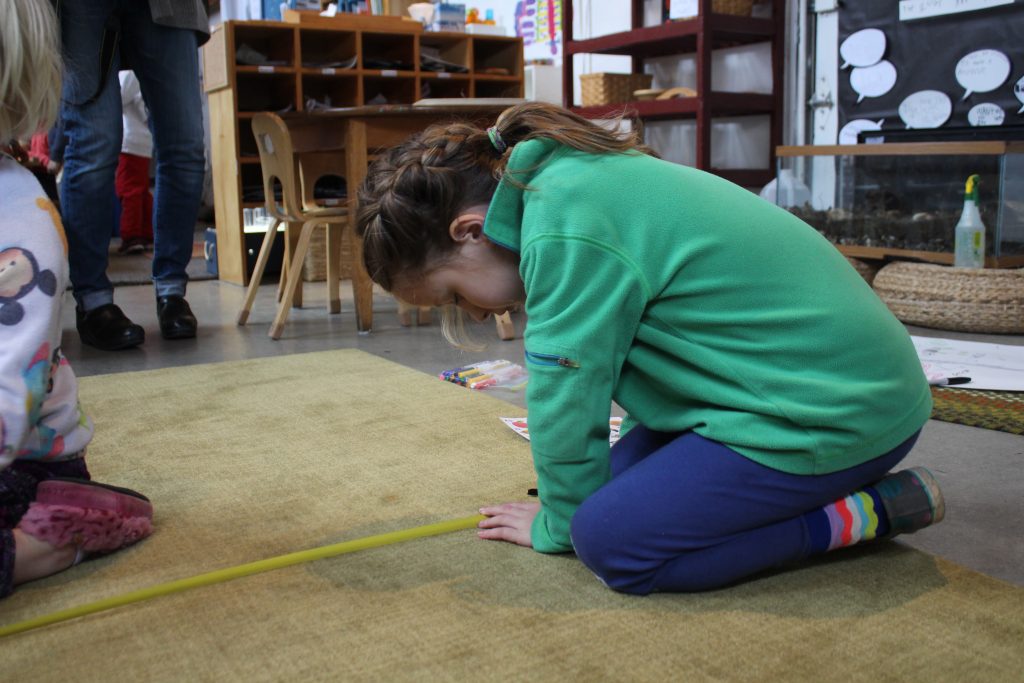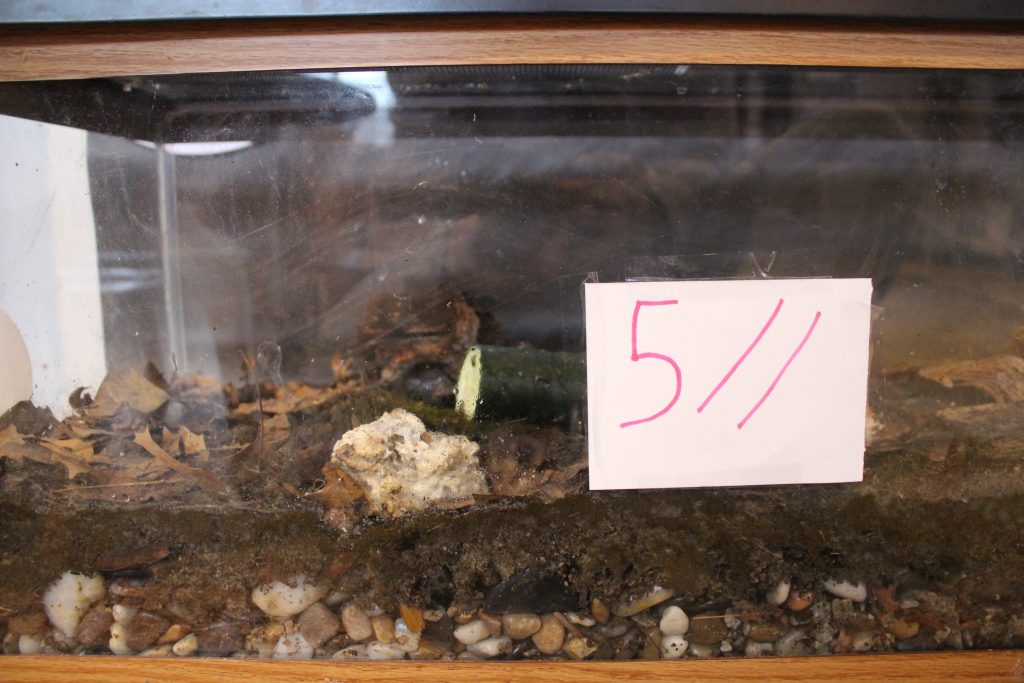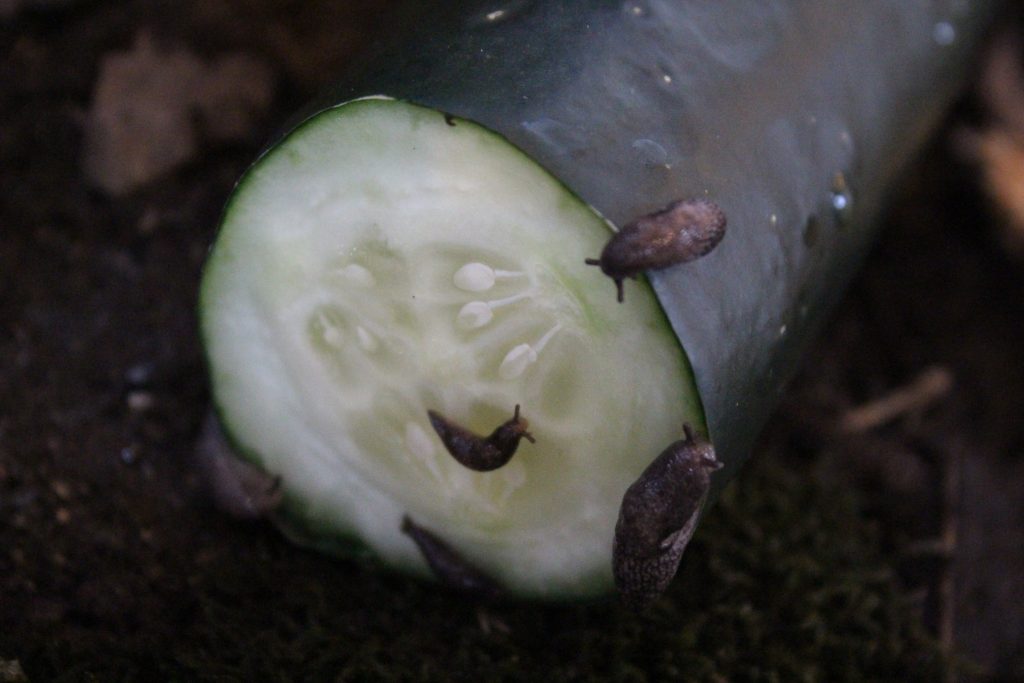In the back of our studio, against the garage door, you will find our slug habitat. You will read Birdie's sign and know that yes, the slugs are still alive and living inside. You will also see a chart keeping record of the information we are gathering to answer a question together.
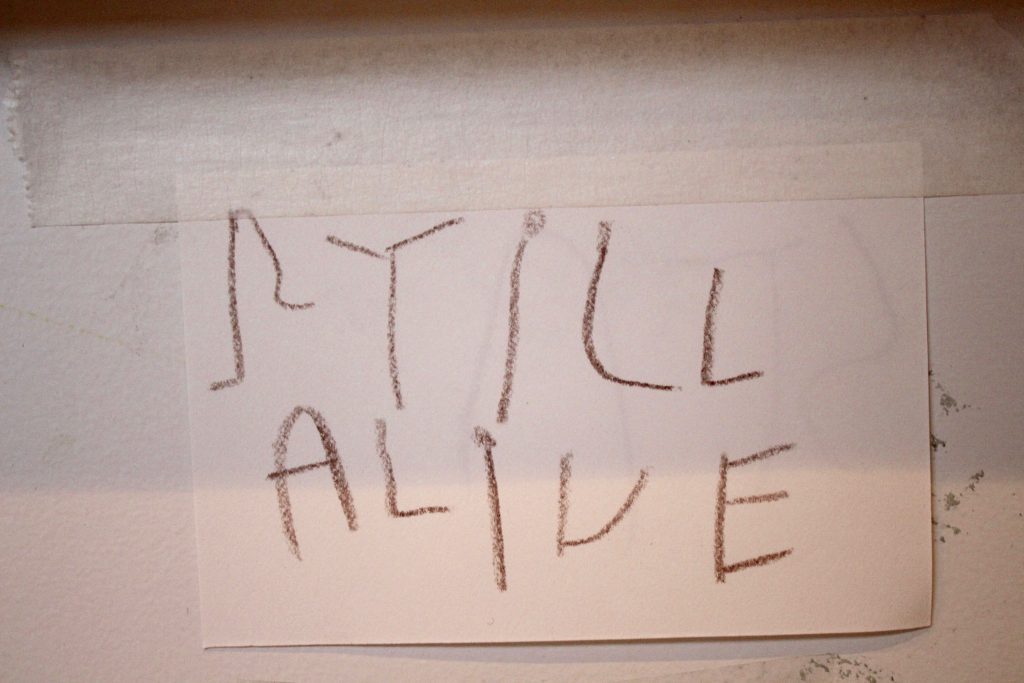
Which food do the slugs like best?
When the children first found the slugs they began asking and answering this question in their play. Outside in the garden we would hear them say, "Oh! They like eggplant!" or "They like yucky mucky stuff." We have invited small groups of children to revisit this question in a new way. Over the past few weeks, these children have been working to create and sustain an experiment.
What do you need to set up your experiment?
Find some slugs. Probably make a chart. BEATRICE
What will the chart record?
Keep track of what they eat. How much have you eat of this fruit or how much have you eat of this one. BEATRICE
How will the chart show that?
We’ll say how much you ate of blah blah. The ones with the most dots…we will do that one. We did dots which one have the most. BEATRICE, referencing the chair agreement vote.
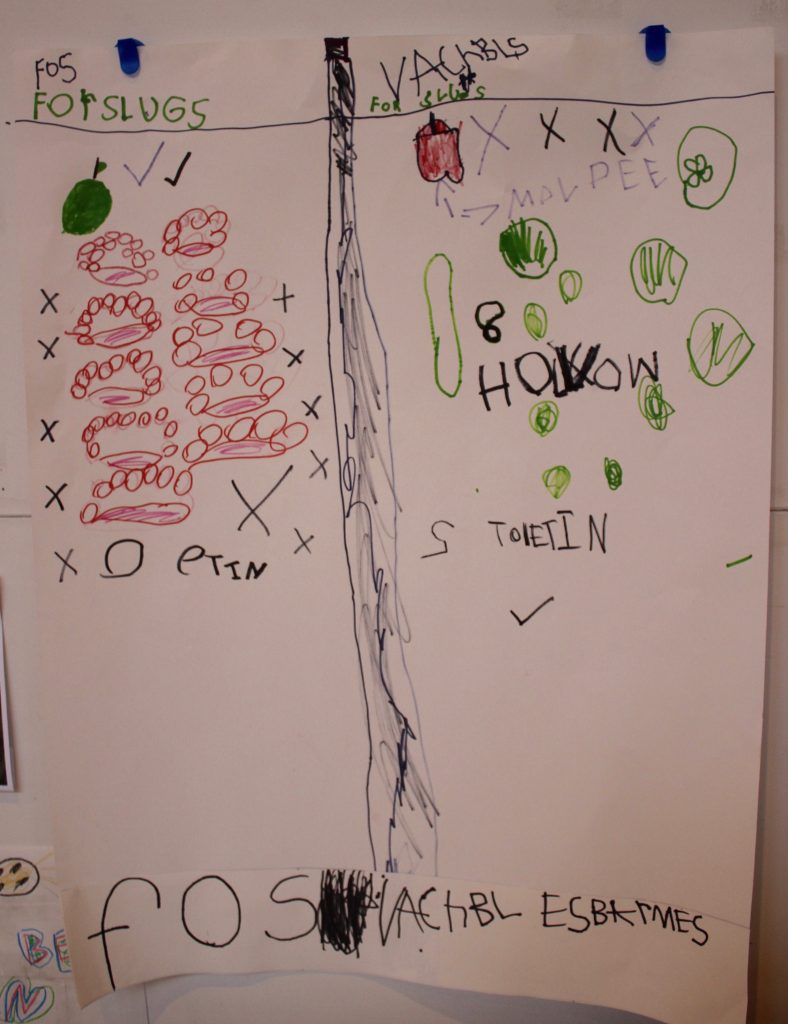
What if we, why don’t we make a new chart like a big piece of paper, draw a line and then I would write pepper, apple. If the apple got nine bites, I would put 9 dots. LYLA
I remember you saying that you want to test lots of different food – how could you show that on the chart?
You could write fruits and vegetables. LYLA
One chart for fruits, one for vegetables, list the different vegetables and fruits. BEATRICE
Jane joins Lyla and Beatrice. As they cut open the apple and pepper they requested, they think together about the timing of this experiment.
Put it in at the same time…for ten or twenty minutes. BEATRICE
No, an hour, it takes a long time. LYLA
Six days cuz usually we keep it in for six days. JANE
How long were the carrots in there? Can you see evidence that they were eaten?
No. LYLA
Does that tell us anything? What does that mean?
We need a long time. JANE
A week. LYLA
A week passes. Beatrice and Ryan return to see the results.
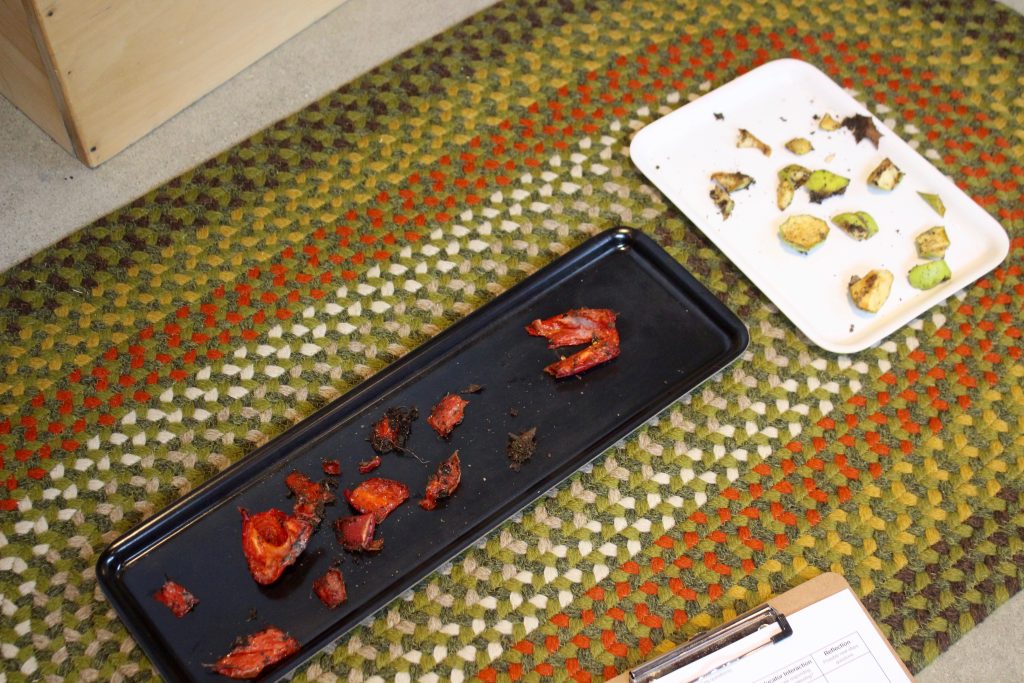
We have to see which have holes. BEATRICE
But none have holes… I have a really good idea. If we put all the slugs on one tray and if they crawl over to one tray we would know. RYAN
The peppers are moldy and slugs don’t like mold. BEATRICE
And the peppers are bigger. And look that that one [apple] it’s only skin. RYAN
But it started out like that. But these are all eaten. BEATRICE
With this information do we know which they like best?
Yes. Because the apples are smaller and the peppers are moldy. We can put a check mark on which one we thought they like more. RYAN
That’s a good idea. I think two checks cuz they really liked it. BEATRICE
The pair think through how they see evidence of what the slugs have eaten and how they can measure this evidence. They experience the uncertainly of their conclusions. They realize bites are difficult to measure. They do see a reduction in size, but they cannot measure the change as they have not recorded how the pieces began. There are many variables at play! When they are challenged to set up the next experiment, they approach the task with new ideas.
We can put ten of each. RYAN
Yeah, we should cut ten slices. BEATRICE
If there is less of the raspberries then they like the raspberries more. RYAN
These are too juicy so they are gonna like them. RYAN
Does it matter that each is the same amount?
It does matter because if there’s less of the raspberries then we know. RYAN
It sounds like you agree the number of each matters. Does the size matter?
They don’t need to be the same size. BEATRICE
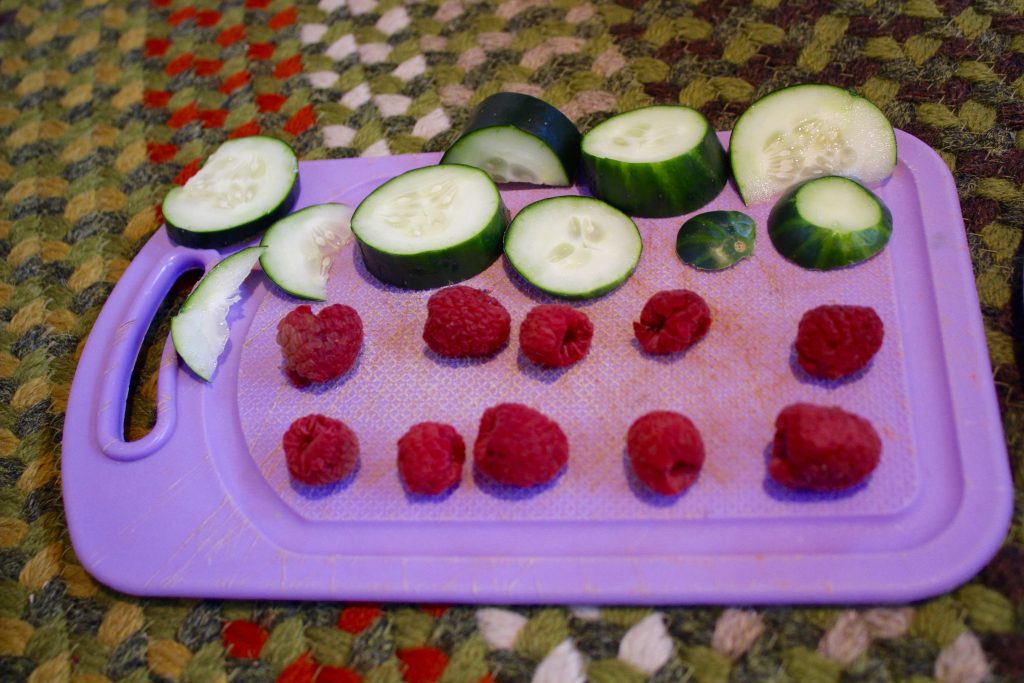
A week passes and Sevi joins Ryan and Beatrice to check the results. Ryan and Beatrice explain their work to Sevi and then the three of them look inside the tank.
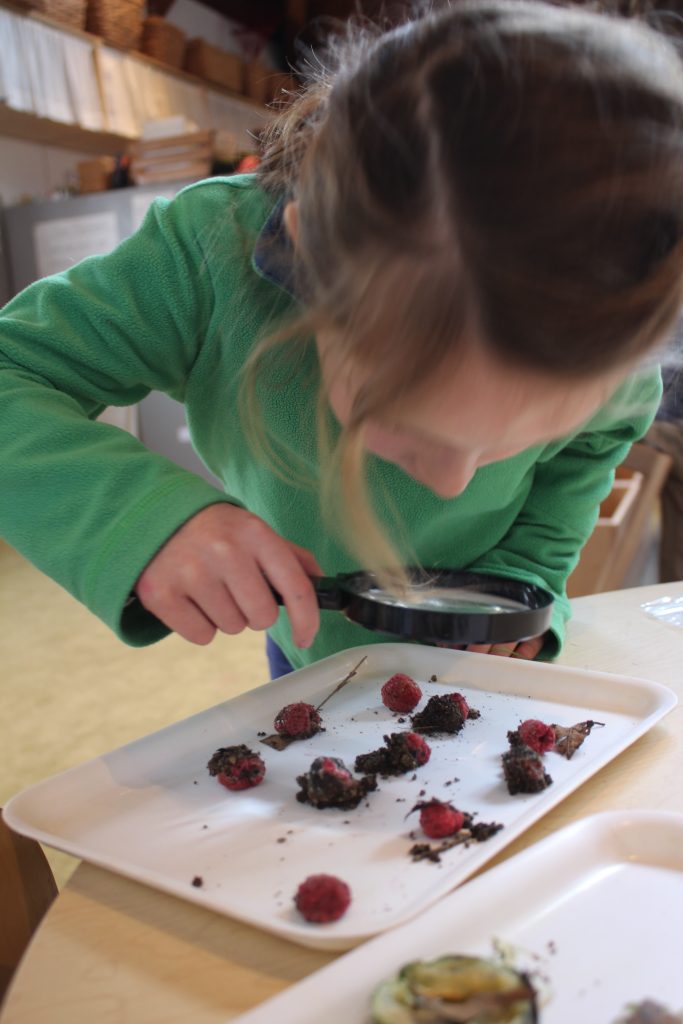
Cucumbers here cuz this is vegetables. BEATRICE
Eight hollow. How do I write that? RYAN
I’ll get the sound tool. SEVI
What letter comes first? RYAN
H! /h/ /h/ /h/. SEVI
Beatrice begins to record the raspberries, drawing ten. Ryan and Sevi draw ten cucumbers.
They like the cucumbers more! RYAN
Let’s see if there are ten cucumbers. BEATRICE
So they ate two cucumbers and the rest are hollow. And the raspberries aren’t even touched. RYAN
The raspberries are moldy. BEATRICE
Let me see if there’s any slug slime on the raspberries. I see it! They are shiny. SEVI
I counted 1 – 2 – 3 – 4 – 5 – 6 – 7 – 8 – 9 – 10 raspberries. SEVI
They ate ten cucumbers. RYAN
What are we doing again? SEVI
Figuring out which one they like more. We have to write it down. RYAN
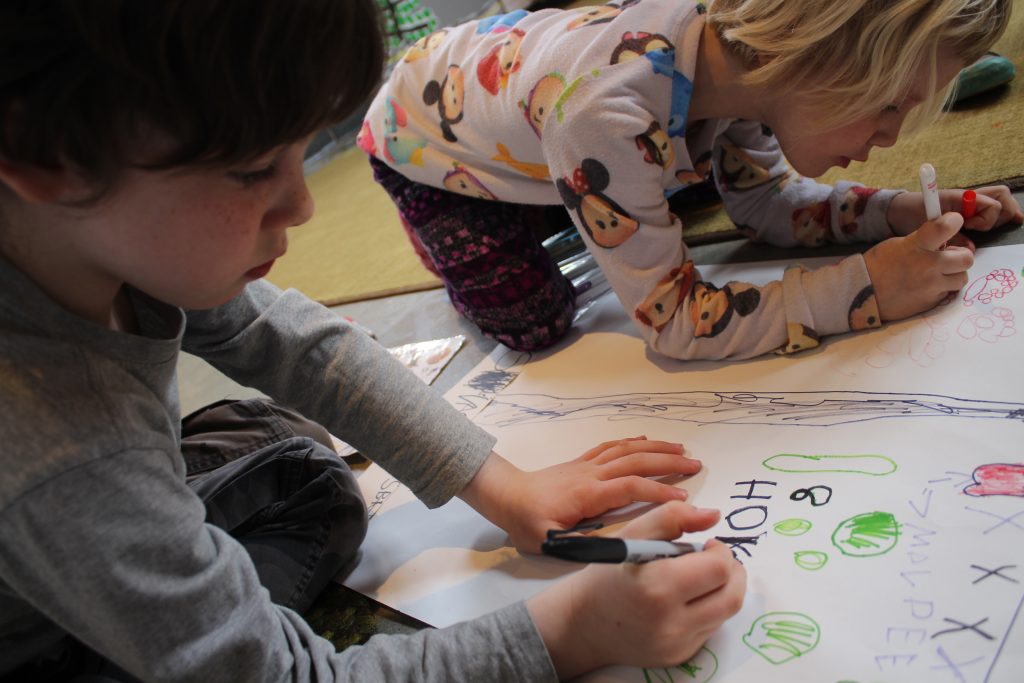
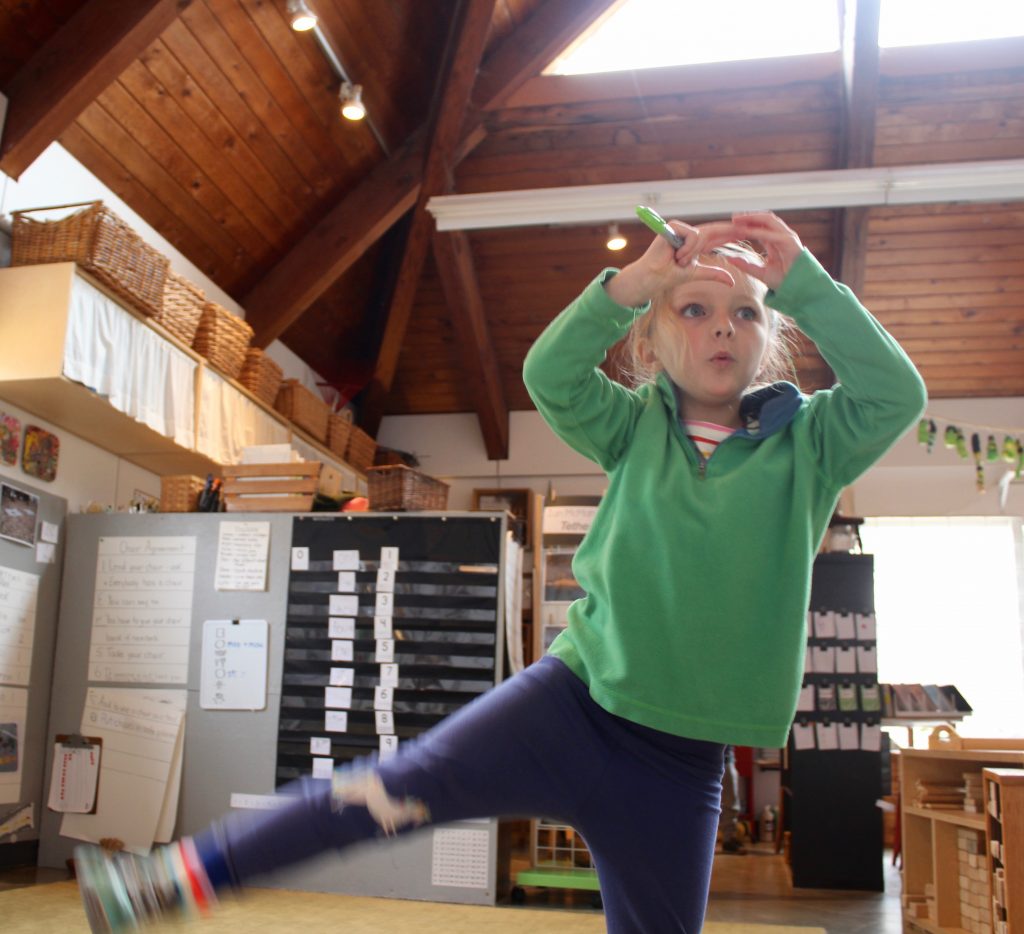
Sevi supports Ryan's effort, sounding out the word "hollow" and creating the letters with her hands and arms.
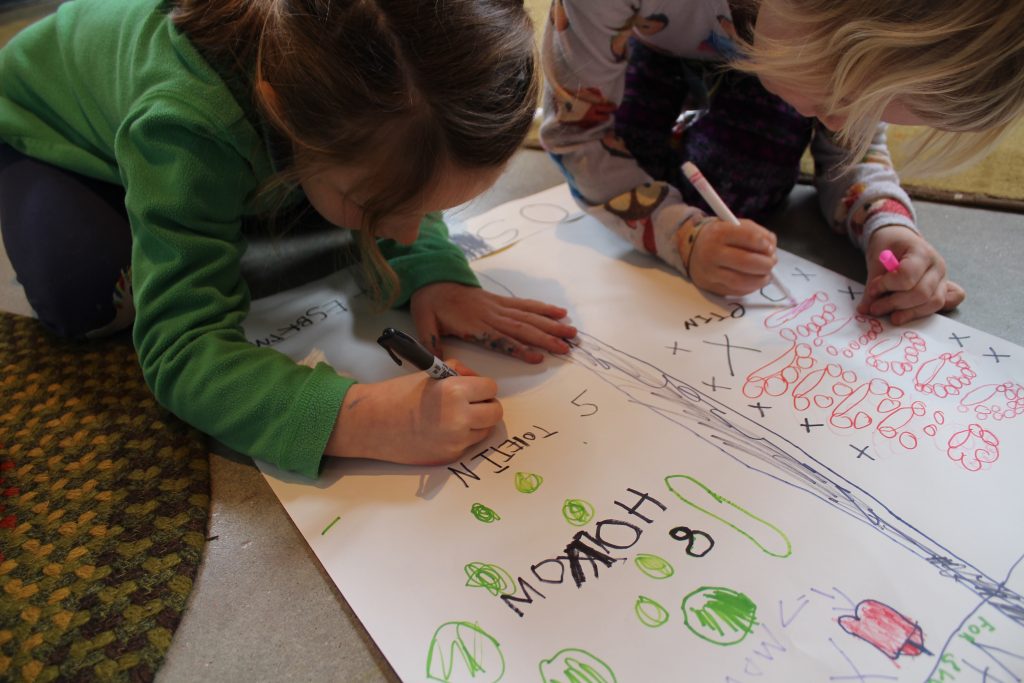
What am I writing? SEVI
“Two eaten.” RYAN
We tried two fruits and two vegetables. RYAN
The group decides that the next fruit should be a tomato and the next vegetable should be a potato. Teachers will buy these over the weekend, but during this wait time the slugs do need to eat! The children decide to give them the cucumber that is left in the fridge. They decide to set up another experiment!
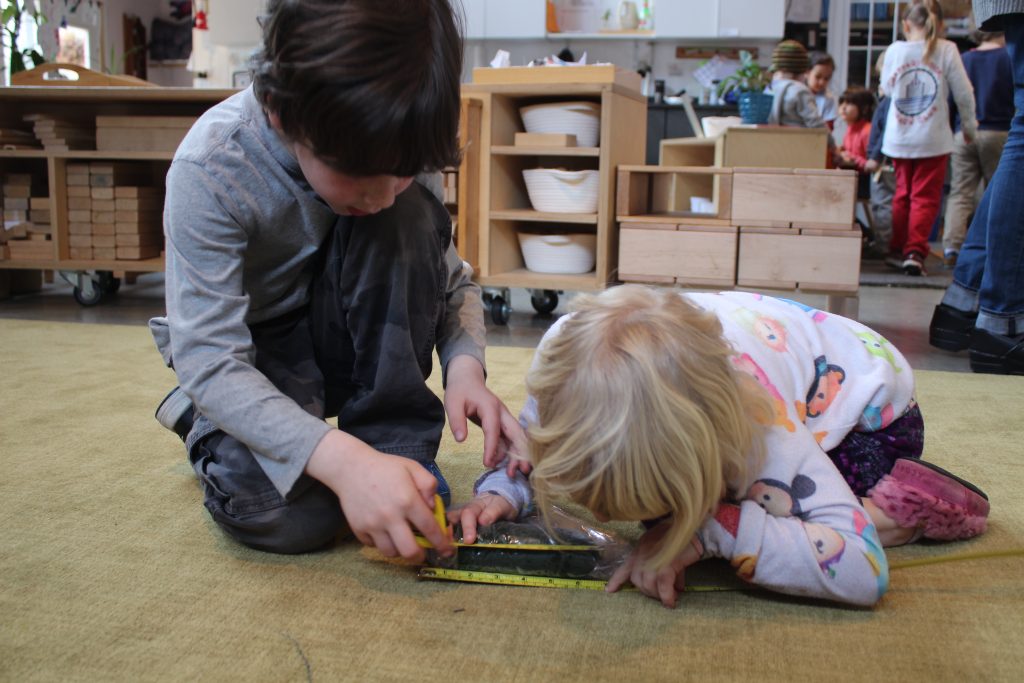
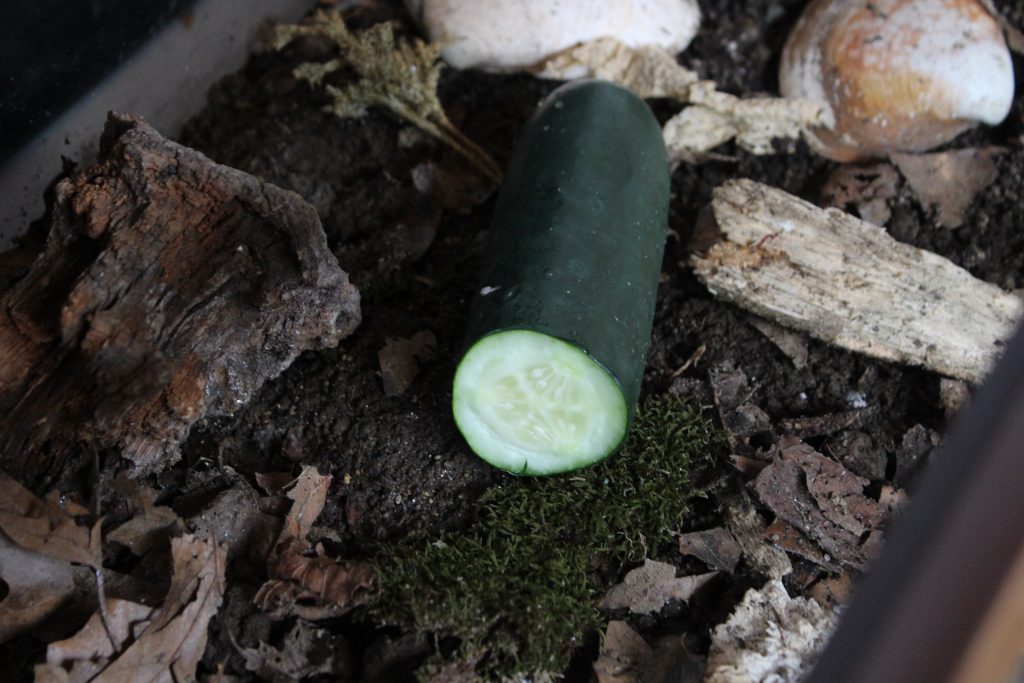
One piece of cucumber, five inches long, set in the tank over the weekend.
We need to measure it. If it is five inches and then we come back and it is only four inches then we know they ate an inch! BEATRICE
